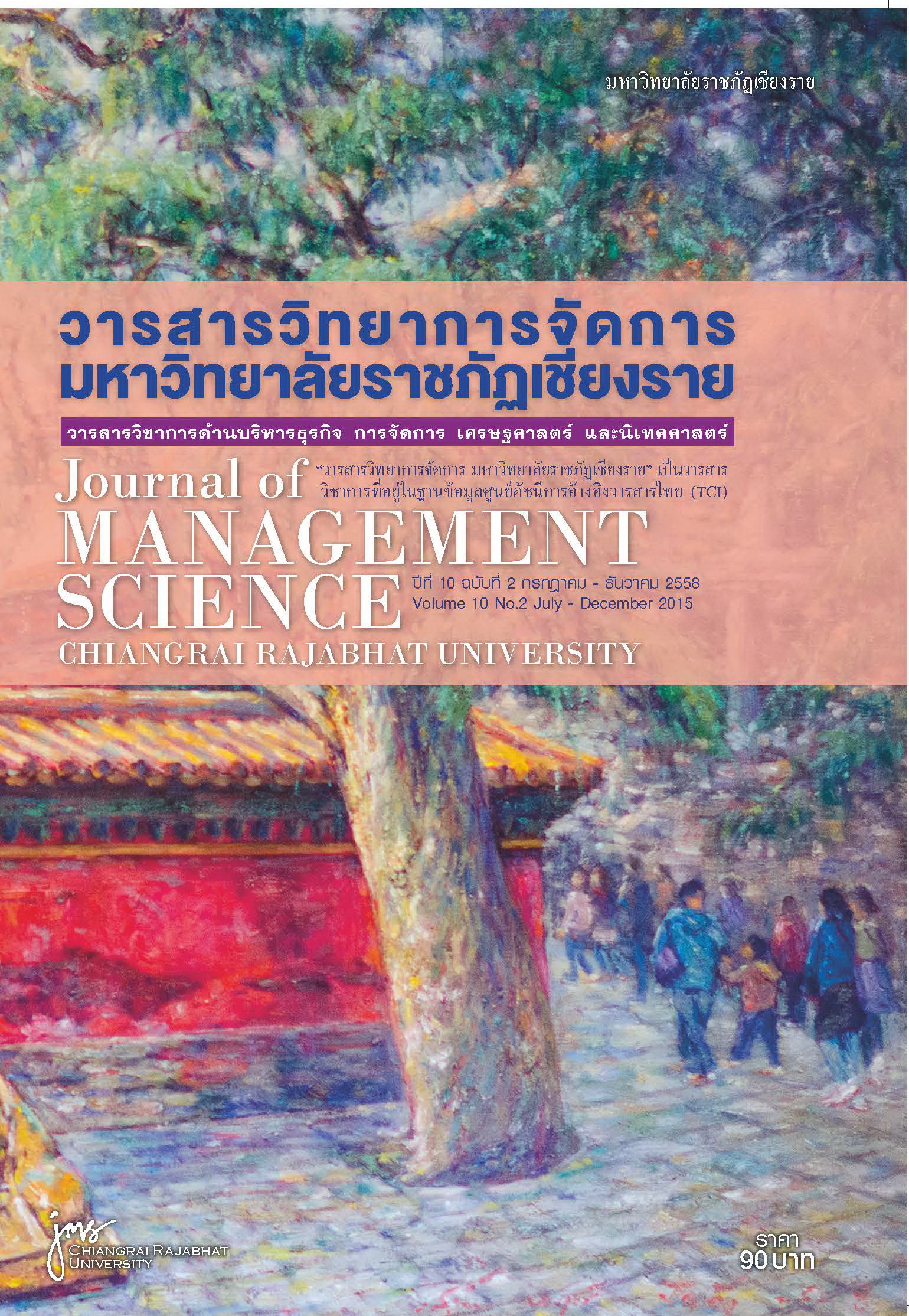The Readiness of Tour Operators in Chiang Rai Province towards Tourism Supply Chain to Lao People’s Democratic Republic and the Republic of the Union of Myanmar
Main Article Content
Abstract
This is a study for improve tourism supply chain management for Thai entrepreneurs to doing tour guide in Lao people’s democratic republic and the republic of the union of Myanmar. The object of this study is to highlight and focus on tourism supply chain for Thai entrepreneurs to guide them to better operate business in Lao People’s Democratic Republic and the Republic of the Union of Myanmar efficiently. There are four majors’ research questions in this research, which are (1) study organization’s competency, (2) tourist behavior, (3) the relationship and cooperation within tourism supply chain, and (4) strength, weakness, and opportunity of do tour guiding business in Lao people’s Democratic Republic and the Republic of the Union of Myanmar. The results of the study and data analysis via the research tool (travel & tourism competitive index) demonstrated the differences perspective of management of tourism companies as well as making it possible to understand the organization's competency. This study can make awareness and understand behavior and attitudes of Thai tourists, cooperation in tourism supply chain whereas opportunity for operating a tour guide business in Lao people’s Democratic Republic and the Republic of the Union of Myanmar were explored. Key findings from this study this can be used to help entrepreneurs’ planning and develop tourism supply chain management to be better and more efficient business.
Article Details
Views and opinions expressed in the journal do not necessarily reflect those of the editors.
References
Lumsdon and Page (2004).Tourism and transport: Issues and agenda for the new millennium.Amsterdam,MA: Elsevier.
McClelland, D. C. (1987). Characteristics of successful entrepreneurs.The journal of creative behavior, 21(3), 219-233.
Mingmalairaks, P.(2011). Innovation Adoption in Thai SMEs.Doctor of Philosophy.Royal Melbourne Institute of Technology University, Melbourne.
Muhcina, S.& Popovici, V.(2008). Logistics and supply chain management in tourism.The Amfiteatru Economic Journal, 10(24), 122-132.
Piboonrungroj, P. & Disney, S. M. (2009). Tourism supply chains: a conceptual framework. PhD network conference(pp. 132-149).Nottingham, UK.
Prahalad, C.& Hamel, G.(1990). The core competence of the corporation.Retrieved April ,2014, from https://faculty.fuqua.duke.edu/~charlesw/s591/willstuff/oldstuff/PhD_2007-2008/Papers/C08/Prahalad_Hamel_1990.pdf
Sigala, M.(2008). A supply chain management approach for investigating the role of tour operators on sustainable tourism: The case of TUI', Journal of Cleaner Production, 16(15), 1589-1599.
Swarbrooke, J.& Horner, S.(2007).Consumer behaviour in tourism.OX: Butterworth-Heinemann.
Woodruffe, C.(1993). What is meant by a competency.Leadership & Organization Development Journal, 14(1), 29-36.
Xinyue, H.& Yongli, T.(2008). Integrated tourism service supply chain management: Concept and operations processes. Paper presented to Neural Networks and Signal Processing, International Conference on (pp. 644-647 ).Nanjing: IEEE.
Zhang, X., Song, H. & Huang, G. Q. (2009). Tourism supply chain management: A new research agenda, Journal of Tourism Management, 30(3), 345-358.


